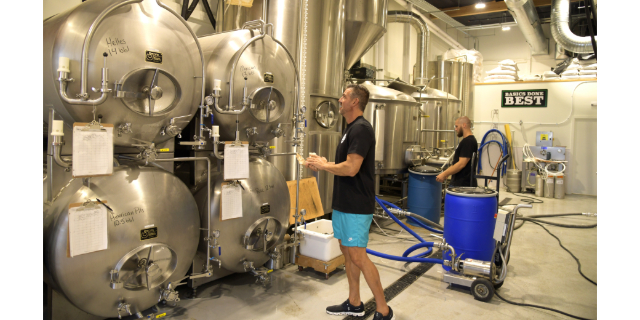Paddling Spring Creek: Clearly a beautiful time
Published 12:00 pm Friday, October 20, 2023

- Barbara Gilbertson slides into Spring Creek from the launch site at Collier Memorial State Park in Chiloquin, north of Klamath Falls off Highway 97.
When it comes to favorite places to kayak, Spring Creek is a clear favorite.
Trending
There are lots of reasons to enjoy kayaking at Spring Creek in Chiloquin. One of those is the ease of getting in and out of the creek’s extremely cold water at its launch site.
Last year the managers at Collier Memorial State Park, the creek’s easiest access location, installed a device at the day use area that allows kayakers to put into and get out of the creek without getting wet. A series of gently sloped pads and handrails make it easy — and fun — to sit in the kayak and gradually slide into the creek. Then, when returning after paddling, it enables a person to remain in their boat and use the handrails to slide back up the pads. And staying dry is recommended, because Spring Creek’s average water temperature is a numbing 40 degrees.
But what truly makes Spring Creek a clear choice for kayaking is its incredibly clear water. That clarity means there’s plenty to see while paddling upstream to its headwaters.
Trending
From the dock, it’s an easy upstream paddle on the creek’s slow-moving, barely noticeable current. The obvious route passes alongside houses and other buildings. Sadly, the once verdant forest along much of the creek remains scarred, crippled and blackened by the Two Four Two Fire that burned 400 acres and damaged Collier’s historic logging museum in 2020.
But the creekside structures and blackened forest give paddlers extra incentive to focus on the creek’s incredible clarity. And, clearly, there’s much to see. Spring Creek’s transparent, crystalline waters reveal tones of turquoise and jade green and, farther along, what are often mistaken as smooth, rounded stones, some the size of golf balls, others larger than softballs.
Look again. They aren’t stones, they’re mare’s eggs, a species of blue-green algae. Scientifically known as nostoc pruniforme, the spongy appearing mare’s eggs grow in colonies. Some eggs reach a diameter of 9 inches and weigh up to 5 pounds. Mare’s eggs are a rarity because their specific condition require areas with little disturbance, water with nutrient content and constant water temperatures of 39 to 43 degrees. Because of the sun’s angle, they weren’t as visible on the upstream paddle, but on the return trip the dozens multiplied into hundreds and thousands.
There’s even more stuff of fascination. Nearing Spring Creek’s headwaters pockets of water bubble from underground springs in its sandy bottom, creating what looks like small geysers of “dancing sand.”
Reaching the headwaters requires some careful maneuvering around tree limbs, rocks and small inlets, but that’s part of the fun.
Once at the headwaters our small flotilla of kayakers paused for lunch, eating from our boats while soaking in the sights and scenery, from along the sheltering forest to the clear, percolating creek.
The return paddle offered a second chance to appreciate what we’d seen earlier. And there was much to see. A lone bald eagle watching from its tall perch. Canada geese carefully avoiding us as we passed. Goats with fur in many shades of blacks and browns grazing along the shore.
There was much to see and experience. For a relaxing, easy and scenic paddle, Spring Creek is clearly a favorite.
To get to Spring Creek, travel to the Spring Creek Day Use Area, located in Collier Memorial State Park about 32 miles north of Klamath Falls off Highway 97.









